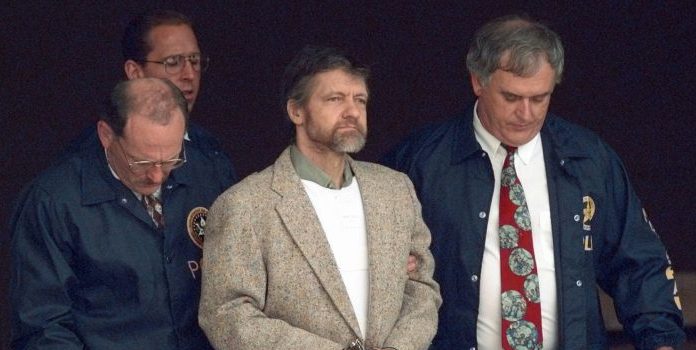(Headline USA) Theodore “Ted” Kaczynski, the Harvard-educated mathematician who retreated to a solitary shack in the Montana wilderness and ran a 17-year bombing campaign that killed three people and injured 23 others, died Saturday. He was 81.
Branded the “Unabomber” by the FBI, Kaczynski died at the federal prison medical center in Butner, North Carolina, Kristie Breshears, a spokesperson for the federal Bureau of Prisons, told The Associated Press. He was found unresponsive in his cell early Saturday morning and was pronounced dead around 8 a.m., she said. A cause of death was not immediately known.
Before his transfer to the prison medical facility, he had been held in the federal Supermax prison in Florence, Colorado, since May 1998, when he was sentenced to four life sentences plus 30 years for a campaign of terror that set universities nationwide on edge. He admitted committing 16 bombings from 1978 and 1995, permanently maiming several of his victims.
He forced The Washington Post, in conjunction with The New York Times, to make the agonizing decision in September 1995 to publish his 35,000-word manifesto, “Industrial Society and Its Future,” which claimed modern society and technology was degrading human capacity and dignity.
But it led to his undoing. Kaczynski’s brother, David, and David’s wife, Linda Patrik, recognized the treatise’s tone and tipped off the FBI, which had been searching for the Unabomber for years in nation’s longest, costliest manhunt.
Authorities in April 1996 found him in a 10-by-14-foot (3-by-4-meter) plywood and tarpaper cabin outside Lincoln, Montana, that was filled with journals, a coded diary, explosive ingredients and two completed bombs.
Kaczynski hated the idea of being viewed as mentally ill and when his lawyers attempted to present an insanity defense, he tried to fire them.
Kaczynski eventually pleaded guilty rather than let his defense team proceed with an insanity defense.
“I’m confident that I’m sane,” Kaczynski told Time magazine in 1999. “I don’t get delusions and so forth.”
He was certainly brilliant.
Kaczynski skipped two grades to attend Harvard at age 16 and had published papers in prestigious mathematics journals. His explosives were carefully tested and came in meticulously handcrafted wooden boxes sanded to remove possible fingerprints. Later bombs bore the signature “FC” for “Freedom Club.”
The FBI called him the “Unabomber” because his early targets seemed to be universities and airlines. An altitude-triggered bomb he mailed in 1979 went off as planned aboard an American Airlines flight; a dozen people aboard suffered from smoke inhalation.
Kaczynski killed computer rental store owner Hugh Scrutton, advertising executive Thomas Mosser and timber industry lobbyist Gilbert Murray. California geneticist Charles Epstein and Yale University computer expert David Gelernter were maimed by bombs two days apart in June 1993.
The Washington Post printed the Unabomber’s manifesto at the urging of federal authorities, after the bomber said he would desist from terrorism if a national publication published his treatise.
The investigation and prosecution were overseen by now-Attorney General Merrick Garland, during a previous stint at the Justice Department.
David Kaczynski wanted his role kept confidential, but his identity quickly leaked out and Ted Kaczynski vowed never to forgive his younger sibling. He ignored his letters, turned his back on him at court hearings and described David Kaczynski in a 1999 book draft as a “Judas Iscariot (who) … doesn’t even have enough courage to go hang himself.”
Ted Kaczynski was born May 22, 1942, in Chicago, the son of second-generation Polish Catholics — a sausage-maker and a homemaker. He played the trombone in the school band, collected coins and skipped the sixth and 11th grades.
He learned to garden, hunt, make tools and sew, living on a few hundred dollars a year.
Adapted from reporting by the Associated Press

